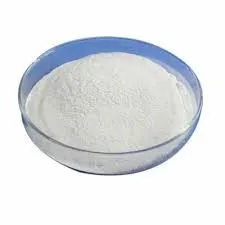
Ago . 14, 2024 09:58 Back to list
Exploring the Benefits and Applications of Methyl Hydroxyethyl Cellulose in Various Industries
The Versatile Applications of Methyl Hydroxyethyl Cellulose (MHEC)
Methyl Hydroxyethyl Cellulose (MHEC) is a cellulose derivative that has gained significant attention in various industries due to its exceptional properties and versatility. Characterized by its white, odorless powder form, MHEC is soluble in cold water, and when dissolved, it forms a viscous solution that can enhance the performance of numerous formulations. This article explores the manufacturing, properties, and diverse applications of MHEC, highlighting its importance in modern materials and formulations.
Manufacturing of MHEC
The production of MHEC involves the chemical modification of cellulose, a natural polymer sourced from plant materials. The primary process includes the etherification of cellulose with methyl and hydroxyethyl groups, which alters its molecular structure and introduces unique properties. This modification significantly enhances its water solubility and thickening abilities while maintaining the structural integrity typical of cellulose. These characteristics make MHEC an attractive option for industries seeking eco-friendly and biodegradable alternatives to synthetic polymers.
Key Properties of MHEC
MHEC is renowned for its thickening, binding, and film-forming capabilities. It exhibits excellent water retention properties, which are critical in applications ranging from construction to personal care products. The viscosity of MHEC solutions can be easily manipulated by adjusting the concentration, making it suitable for various formulations that require specific rheological properties.
Additionally, MHEC is non-toxic and safe for use in food and pharmaceutical applications, thanks to its natural origins. It is also resistant to oil and organic solvents, offering an advantage in situations where moisture control is essential. Its ability to form gels at lower temperatures enhances its utility in different fields, as it stabilizes emulsions and suspensions effectively.
methyl hydroxyethyl cellulose mhec

Applications of MHEC
1. Construction Industry MHEC is extensively employed as a thickener and binder in cement-based products such as tile adhesives, stuccos, and mortar. Its water retention properties ensure that these materials remain workable longer, allowing for improved adhesion and reduced cracking.
2. Paints and Coatings In the paints and coatings sector, MHEC functions as a thickener and stabilizer. It enhances the viscosity of paints while preventing sagging and settling, thereby improving the application and finish of coatings on surfaces.
3. Food and Pharmaceuticals MHEC is utilized as a thickener, stabilizer, and emulsifier in food products, contributing to texture and consistency. In the pharmaceutical industry, it is often found in formulations for controlled release of active ingredients, benefiting drug delivery systems.
4. Cosmetics and Personal Care The cosmetic industry relies on MHEC for its ability to provide a smooth texture and improved moisturizing properties in lotions, creams, and gels. It helps in stabilizing emulsions and improving the overall sensory experience of personal care products.
Conclusion
Methyl Hydroxyethyl Cellulose (MHEC) serves as a vital ingredient across a wide array of industries due to its remarkable characteristics. Its ability to enhance water retention, thickness, and stability makes it invaluable in construction, coatings, food, pharmaceuticals, and personal care products. As industries pivot towards sustainable practices, the demand for eco-friendly ingredients like MHEC is likely to increase. By combining functionality with safety, MHEC exemplifies the potential of cellulose derivatives to meet contemporary needs while preserving environmental integrity. Thus, continued research and development of MHEC will undoubtedly unveil new possibilities and applications in the future.
-
Unlocking the Benefits of HPMC Products: A Gateway to Versatile Applications
NewsAug.07,2025
-
Unleashing the Potential of HPMC Ashland: A Comprehensive Look
NewsAug.07,2025
-
Tile Bonding Cellulose: The Key to Superior Adhesion and Durability
NewsAug.07,2025
-
Hydroxypropyl Methylcellulose Powder: The Versatile Component in Modern Pharmaceuticals
NewsAug.07,2025
-
Hydroxyethyl Cellulose: The Versatile Solution for Various Industries
NewsAug.07,2025
-
Hydroxyethyl Cellulose (HEC): The Versatile Polymer for Various Applications
NewsAug.07,2025







